Wisconsin Agriculture
Originally written February 1, 2006 | Last updated
February 23, 2014
Wisconsin agriculture has a long and proud tradition. Currently it is ranked number
1 among U.S. states for dairy, sweet corn, and silage corn production. At one time
it was the highest ranked state for wheat production. The soils of Wisconsin are
diverse. Formed over thousands of years and carved by glaciers. It is on the edge
of the Midwest Corn Belt and is challenged by cool, wet springs and dry, hot summers.
Overview
Ecology of Wisconsin
History of Grain Production in Wisconsin
New and Emerging technologies
Issues and Tensions faced by Wisconsin grain farmers
Significant Agronomic Historical Events in Wisconsin
PDF file of Slides
Top 10 Management and Technology Trends in Wisconsin
Transgenic crops
Pest management and pest resistance
Equipment changes in planting and harvesting
Pesticide contamination
Gulf of Mexico Hypoxia
On-going dairy farm transition
BioFuels
Conservation Tillage
Controlled wheel traffic
Increased inputs, i.e. fungicides, non-conventional soil amendments, micro nutrients
Previous trends influencing Wisconsin agriculture (Issues and Tensions)
Weather: Climate change
Brazilian soybean production
Information and knowledge
Sustainability of current Midwest cropping systems
Government programs
Corn seed treatments and Soybean inoculants
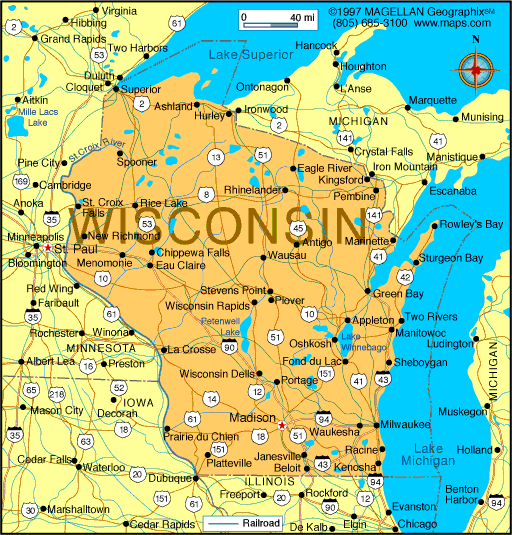
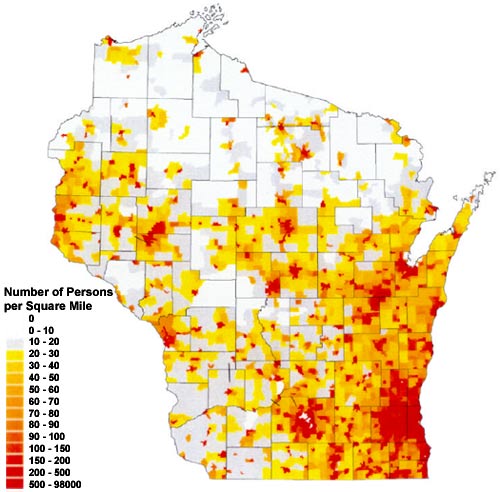

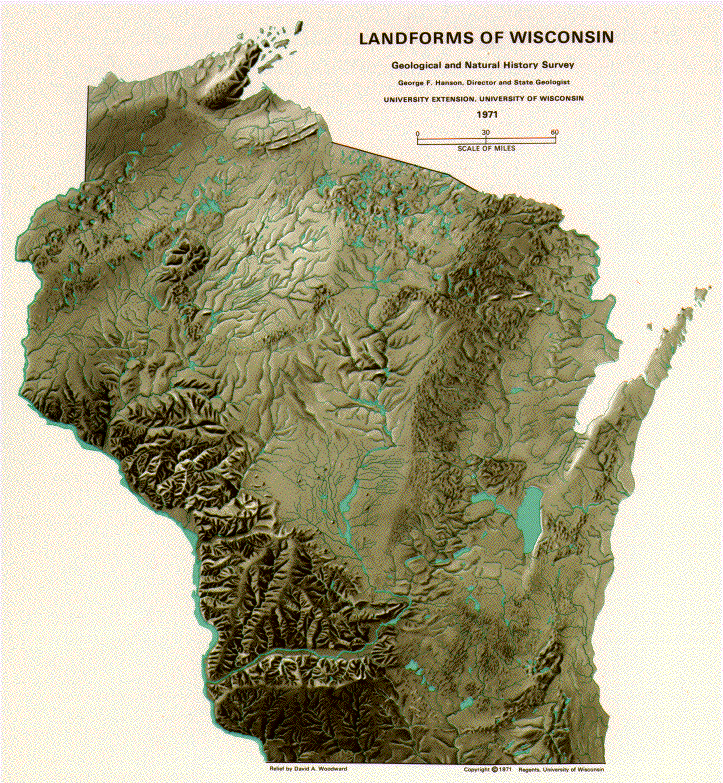
- Major cities and markets - highways, railroads and sea ports
- Sea ports: Superior, Green Bay, Milwaukee, Mississippi River, Illinois River
- Dairy cows
- Ethanol plants
- Ecological landscape
- Landforms
Climate and Weather of Wisconsin
Temperature
- August highs, January lows
- Last Spring and First Fall Killing Frosts, USDA Plant Hardiness map
- Maturity belts
- Corn
- Soybean
- Winter wheat - Hessian fly

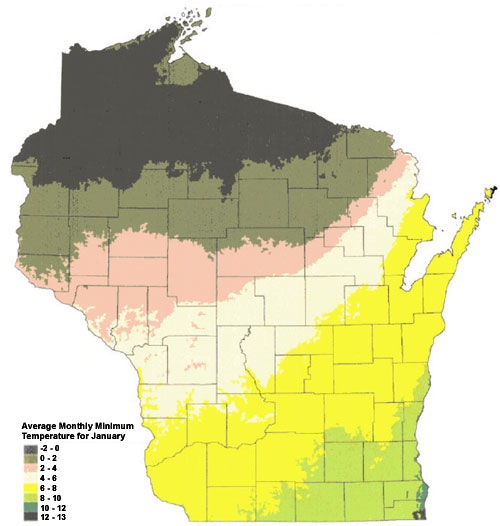


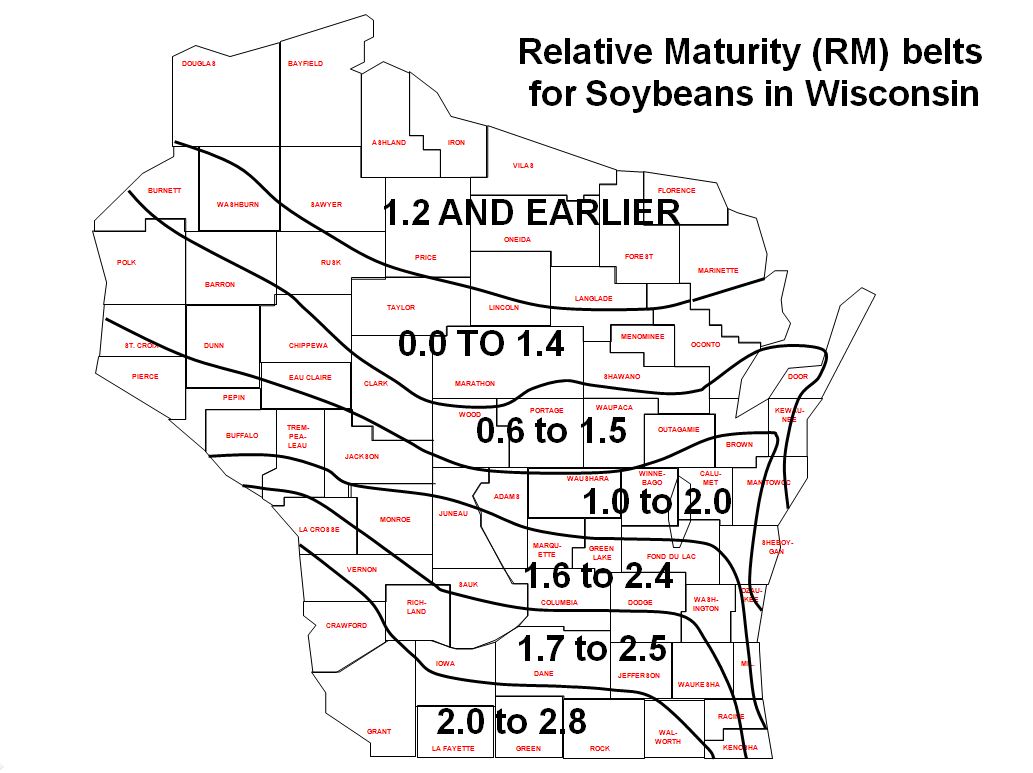
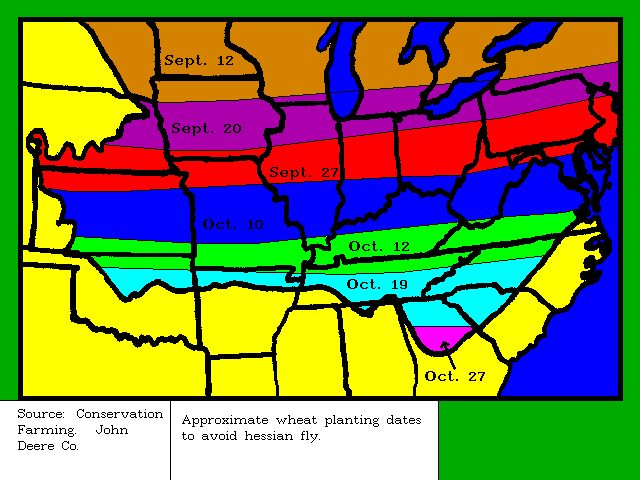
Precipitation
- April through September rainfall for Wisconsin averages 21 inches (533 mm)




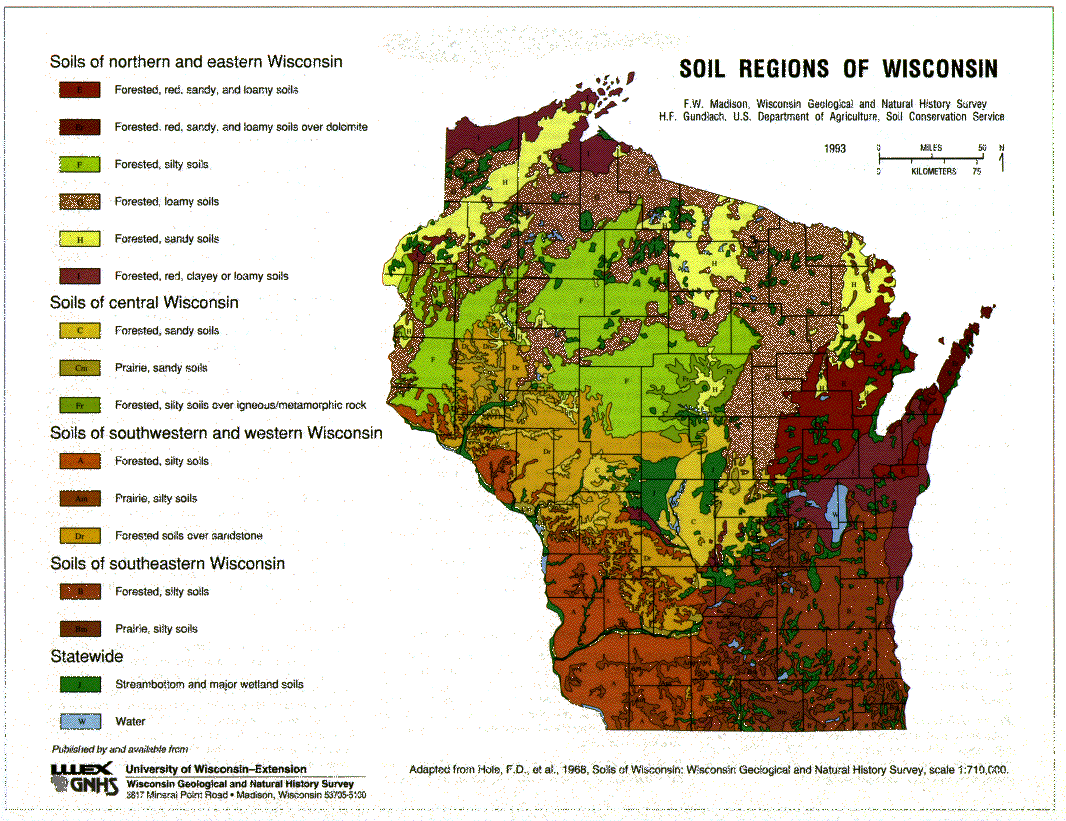
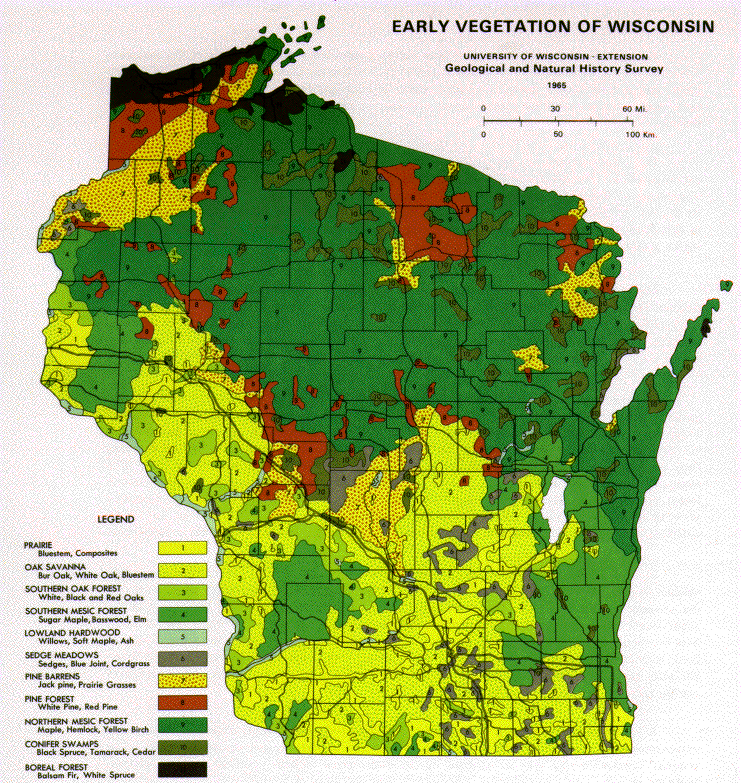
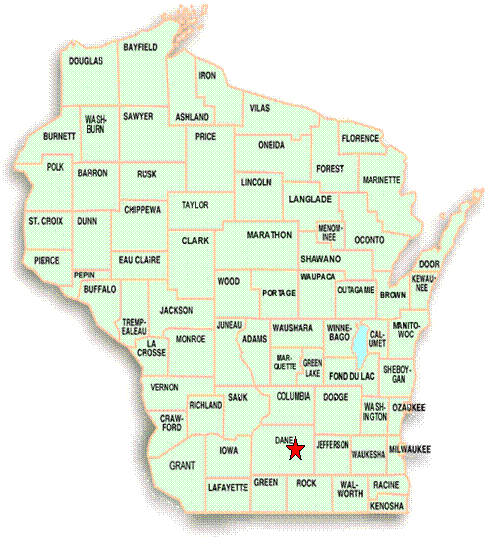
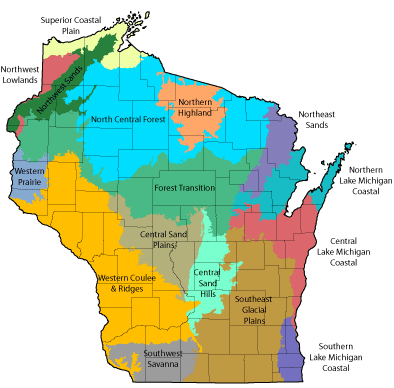
|
Usual Planting and Harvest Dates in Wisconsin
|
|
Crops
|
Usual Planting Dates
|
Usual Harvest Dates
|
Principal Producing Areas
|
|
Begins
|
Ends
|
Begins
|
Most Active
|
Ends
|
Districts
|
Counties
|
|
Corn for grain
|
April 25
|
June 10
|
Oct. 1
|
Oct. 15 - Nov. 15
|
Nov. 30
|
SC, WC, SW
|
Dane, Rock, Grant
|
|
Corn for silage
|
April 25
|
June 10
|
Sept. 10
|
Sept. 20 - Oct. 15
|
Nov. 1
|
EC, SC, SW
|
Dane, Dodge, Clark
|
|
Oats
|
April 1
|
May 25
|
July 20
|
July 30 - Aug. 25
|
Sept. 5
|
EC, WC, NC
|
Marathon, Clark, Grant
|
|
Barley
|
April 5
|
May 15
|
July 15
|
July 25 - Aug. 20
|
Sept. 1
|
NC, EC, NW
|
Barron, Marathon, Clark
|
|
Rye
|
Aug. 15
|
Oct. 1
|
July 5
|
July 15 - Aug. 5
|
Aug. 10
|
NC, C, WC
|
Marathon, Waushara, Dunn
|
|
Winter wheat
|
Sept. 5
|
Oct. 5
|
July 15
|
July 25 - Aug. 15
|
Aug. 20
|
EC, SC, SE
|
Fond du Lac, Sheboygan, Manitowoc
|
|
Spring wheat
|
April 5
|
May 15
|
July 25
|
Aug. 5 - Aug. 25
|
Sept. 1
|
NW, NE
|
Barron, Oconto, Pierce
|
|
Soybeans
|
May 5
|
June 30
|
Oct. 1
|
Oct. 15 - Nov. 1
|
Nov. 10
|
SC, SE, EC
|
Rock, Dane, Walworth
|
|
Tobacco
|
May 15
|
July 5
|
Aug. 15
|
Aug. 25 - Sept. 10
|
Sept. 25
|
SC, SW
|
Dane, Vernon, Rock
|
|
Potatoes
|
March 25
|
May 1
|
July 20
|
Aug. 15 - Oct. 1
|
Oct. 10
|
C, NE
|
Portage, Adams, Waushara
|
|
Alfalfa Hay
|
|
|
June 1
|
|
Sept. 30
|
SW, EC, WC
|
Grant, Marathon, Dane
|
|
All other Hay
|
|
|
June 10
|
|
Sept. 30
|
NW, NC, WC
|
Marathon, Clark, Taylor
|
|
Mint
|
April 20
|
June 1
|
July 10
|
July 25 - Aug. 25
|
Sept. 15
|
C, SC, SE
|
Marquette, Jefferson, Walworth
|
|
Sweet corn
|
May 5
|
June 30
|
Aug.5
|
Aug. 15 - Sept. 25
|
Oct. 5
|
C, EC, SC
|
Portage, Waushara, Fond du Lac
|
|
Source: Wisconsin 1999 Agriculture Statistics
|
Harvested acreage of crops since 1866

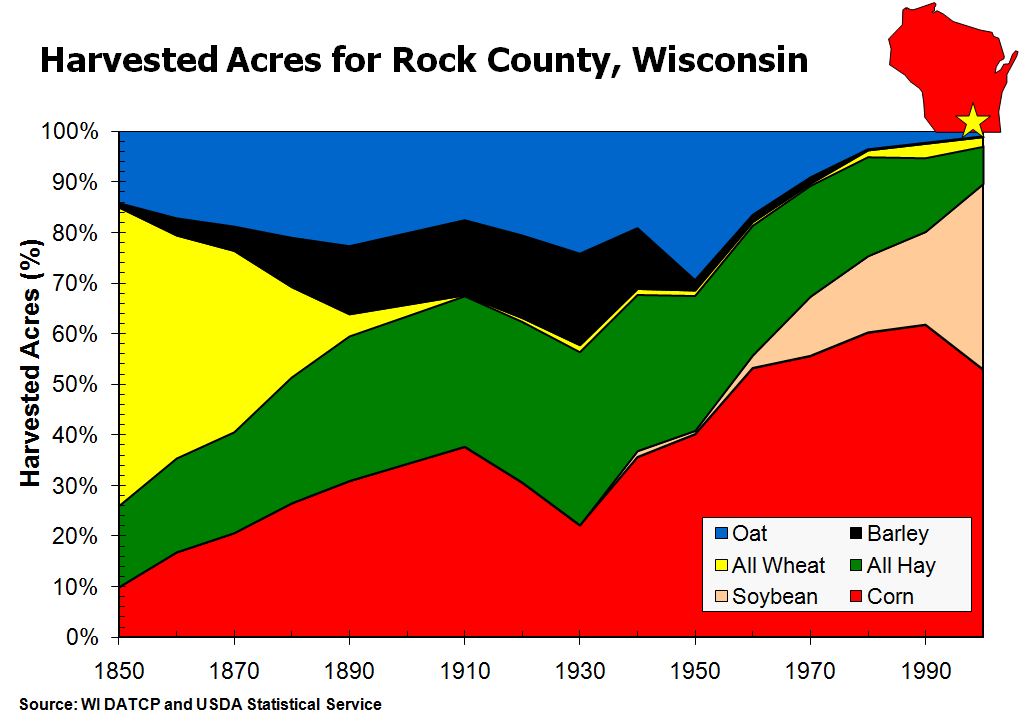

Corn yield since 1866
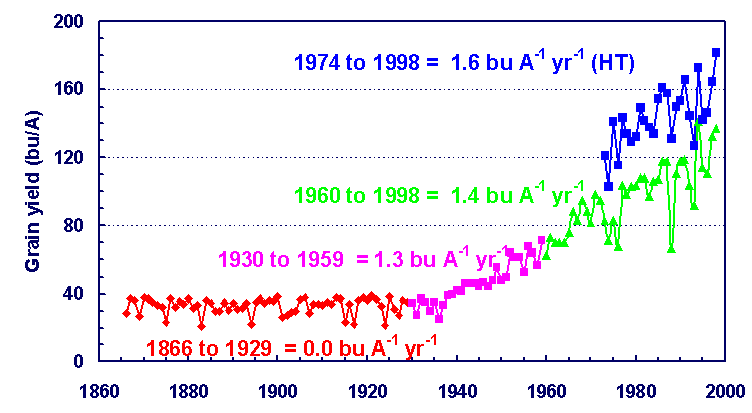

Crop value since 1950

Current Production Statistics
U.S. County acreage and yield of corn, soybean, wheat and oat
- Wheat and oat acreage is decreasing but are still important for rotations.
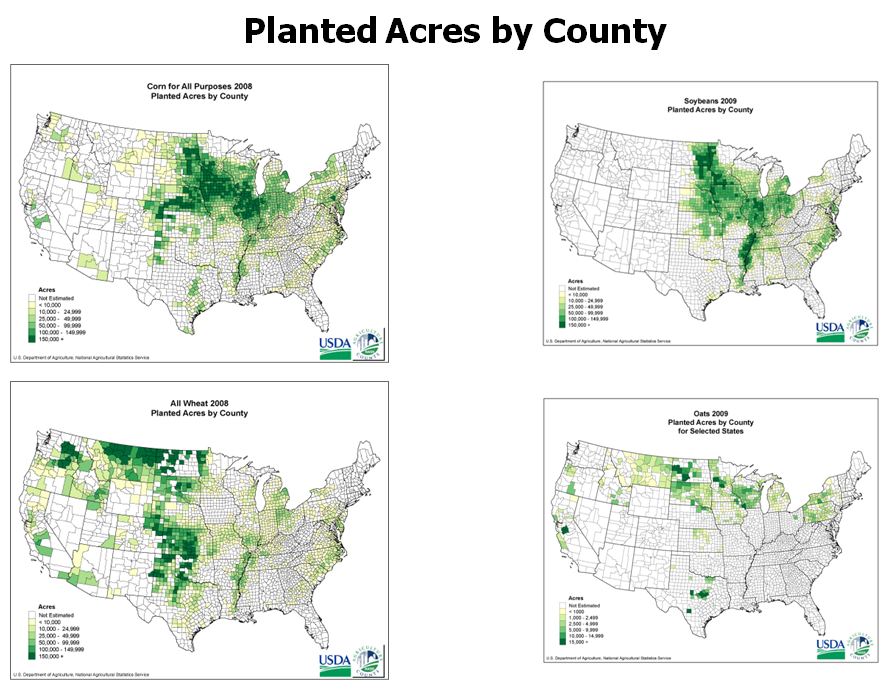
Yield of corn, soybean, wheat and oat
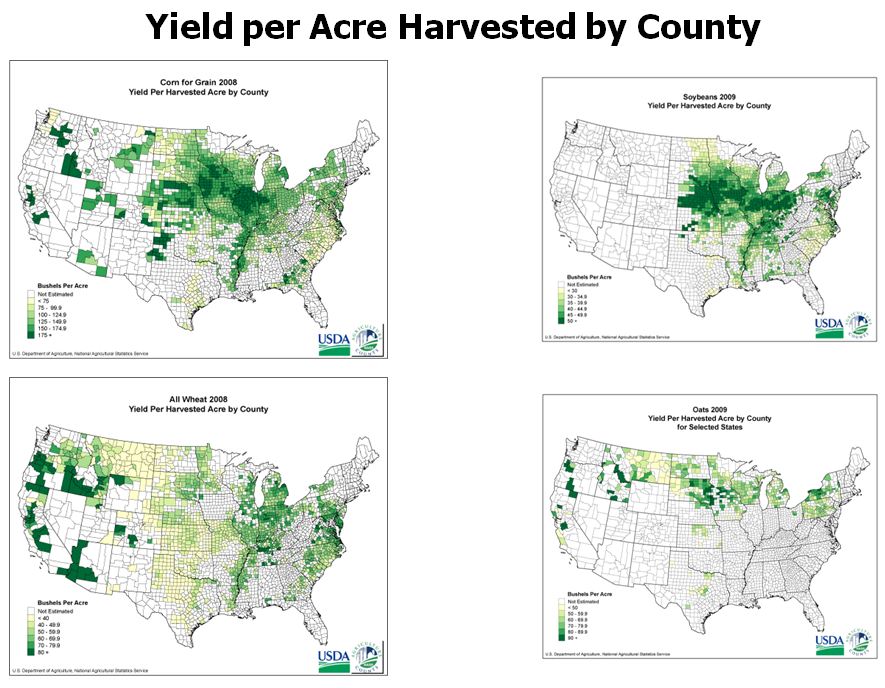

|
Wisconsin's Rank in U.S. Crop Agriculture.
|
|
Commodity
|
Rank among states
|
Harvested Acres
|
Unit
|
Yield per Acre
|
Production
|
Dollar Value
|
|
|
|
(thousands)
|
|
|
(thousands)
|
(thousands)
|
|
Corn for grain
|
7
|
2,850
|
Bu.
|
143
|
407,750
|
753,968
|
|
Corn for silage
|
1
|
730
|
Ton
|
16.5
|
12,045
|
---
|
|
Soybeans
|
12
|
1,300
|
Bu.
|
46
|
59,800
|
278,070
|
|
All wheat
|
33
|
127
|
Bu.
|
59
|
7,480
|
12,716
|
|
Winter wheat
|
---
|
120
|
Bu.
|
60
|
7,200
|
12,240
|
|
Spring wheat
|
---
|
7
|
Bu.
|
50
|
280
|
476
|
|
Oats
|
1
|
300
|
Bu.
|
62
|
18,600
|
18,600
|
|
Barley
|
16
|
65
|
Bu.
|
52
|
3,380
|
3,887
|
|
Rye
|
12
|
12
|
Bu.
|
32
|
384
|
576
|
|
Potatoes
|
3
|
85.0
|
Cwt.
|
400
|
34,000
|
188,700
|
|
Dry edible beans
|
15
|
8.0
|
Cwt.
|
15.5
|
124
|
2,765
|
|
All Hay
|
5
|
2,600
|
Ton
|
2.89
|
7,510
|
|
|
Alfalfa
|
---
|
2,100
|
Ton
|
3.10
|
6,510
|
|
|
All other
|
---
|
500
|
Ton
|
2.00
|
1,000
|
|
|
Source: Wisconsin 1999 Agriculture Statistics
|
|
State Rankings for Crop Production.
|
|
Crop
|
1
|
2
|
3
|
4
|
5
|
6
|
7
|
8
|
9
|
10
|
|
Corn for grain
|
IA
|
IL
|
NE
|
MN
|
IN
|
KS
|
WI
|
OH
|
SD
|
MI
|
|
Corn for silage
|
WI
|
NY
|
CA
|
MN
|
PA
|
IA
|
MI
|
NE
|
SD
|
ID
|
|
Soybeans
|
IA
|
IL
|
MN
|
IN
|
NE
|
OH
|
MO
|
SD
|
AR
|
KS
|
|
Oats
|
WI
|
MN
|
ND
|
SD
|
IA
|
PA
|
MI
|
TX
|
NY
|
NE
|
|
All wheat
|
KS
|
ND
|
MT
|
OK
|
WA
|
TX
|
SD
|
CO
|
ID
|
NE
|
|
Alfalfa Hay
|
CA
|
SD
|
WI
|
MN
|
NE
|
IA
|
ID
|
KS
|
MT
|
MI
|
|
All Hay
|
TX
|
SD
|
CA
|
NE
|
WI
|
KS
|
MO
|
MN
|
IA
|
ND
|
|
Potatoes
|
ID
|
WA
|
WI
|
CO
|
OR
|
ND
|
MN
|
ME
|
CA
|
MI
|
|
Source: Iowa 1999 Agriculture Statistics
|
Corn and soybean production potential
- Francis Child's 2002 world record of 442 bu/A was set just across the WI/IA
border.
- Highest recorded corn and soybean yields in Wisconsin.
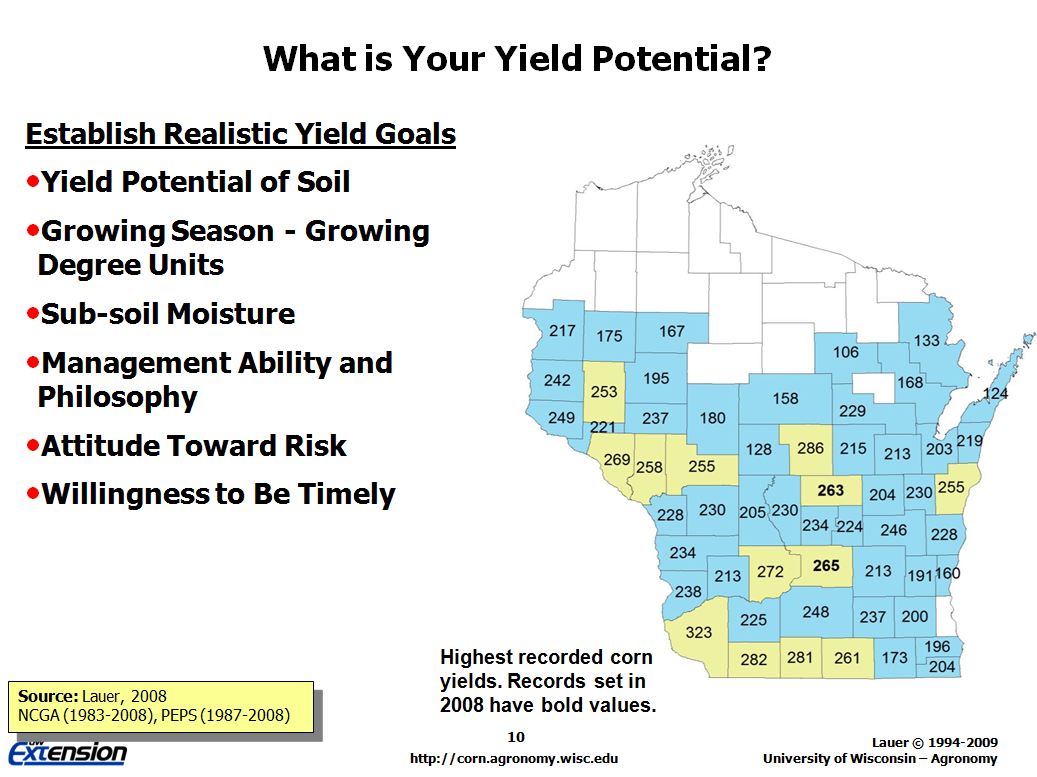
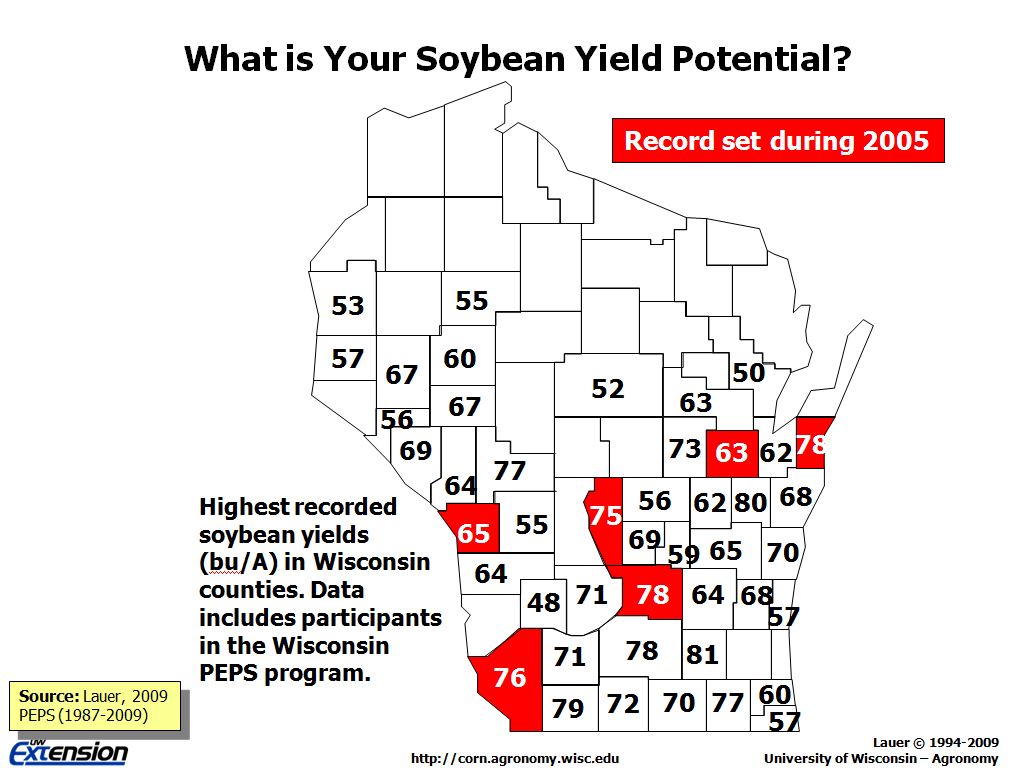
Years of record corn yields
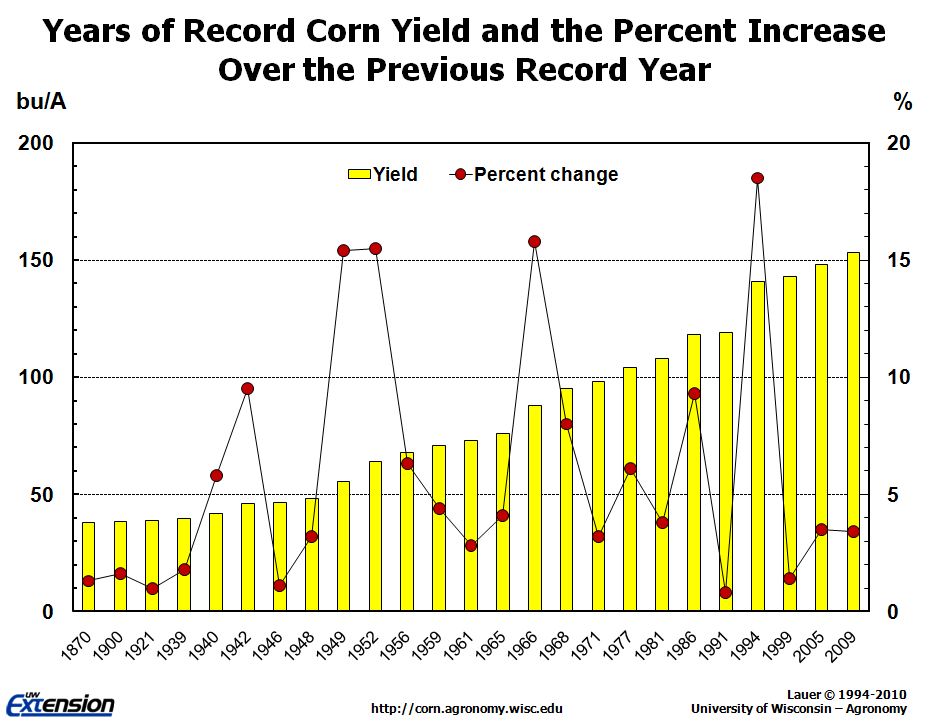
Relative impact (% change) of management decisions on corn grain yield in WI
Hybrid: Top to bottom ranking = 0 to 30% yield change
- Presence or absence of genetic traits = 0 to 100% yield change
Rotation: Continuous v. Rotation = 5 to 30% yield change
Soil Fertility: 160 v. 0 lb N/A = 20 to 50% yield change
Date of Planting: May 1 to June 1 = 0 to 30% yield change
- Also need to add moisture penalty
Row spacing: 30-inches to 15-inches = 0 to 5% yield change
Pest control: Good v. Bad = 0 to 100% yield change
Cultivation: Yes v. No = 0 to 10% yield change
Harvest timing: Oct. 15 to Dec. 1 = 0 to 20% yield change
Transgenic crops: GMOs
- Corn: SuperStax
- Soybean: RR, high oleic acid
- Wheat: None
- Alfalfa: hybrids recently developed by Dairyland Seed, Roundup Ready
Pest management and Pest resistance



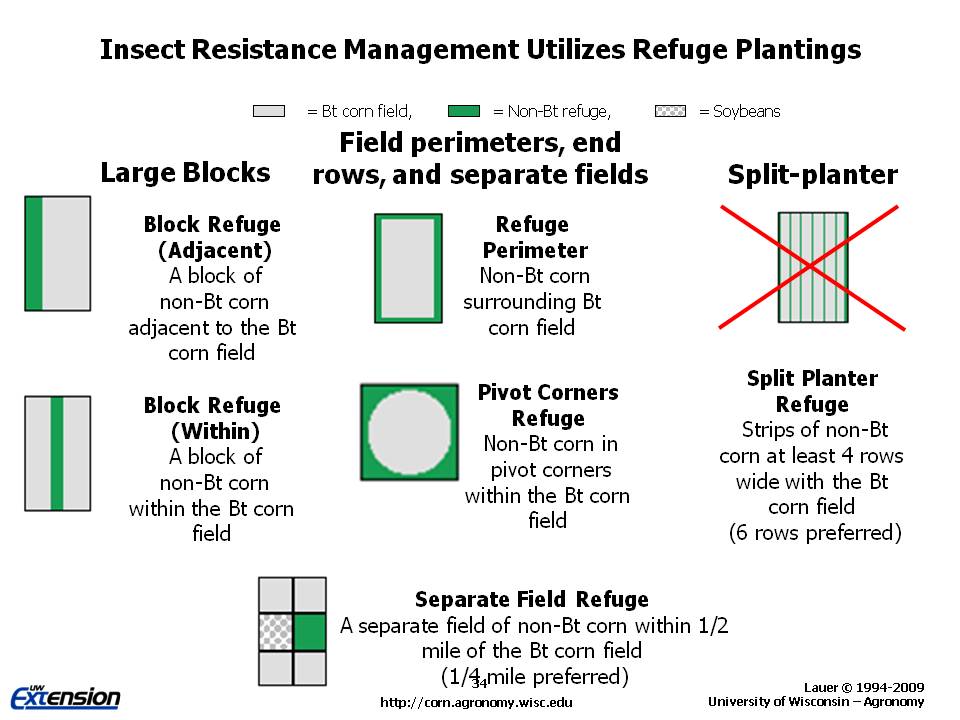
Equipment changes in corn planting and harvesting
- Plant population
- Row spacing
- Planting date


Pesticide contamination: Ground water quality and herbicide prohibition areas -Atrazine
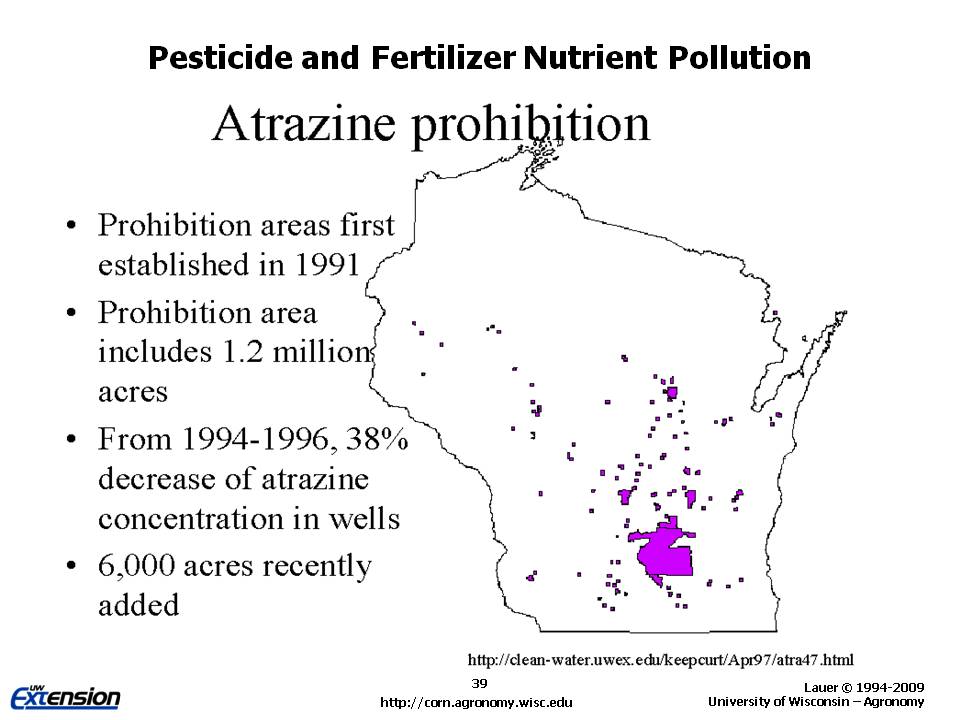
Hypoxia in Gulf of Mexico and water quality

On-going dairy farm transition: CAFOs and Dairy expansions - Corn silage
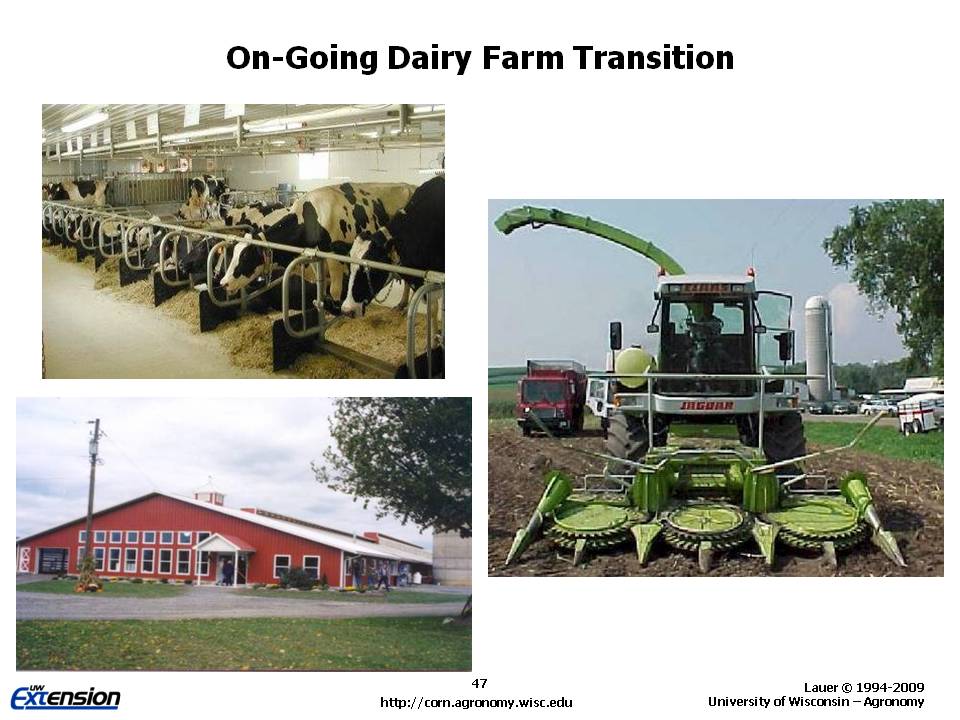
Biofuels
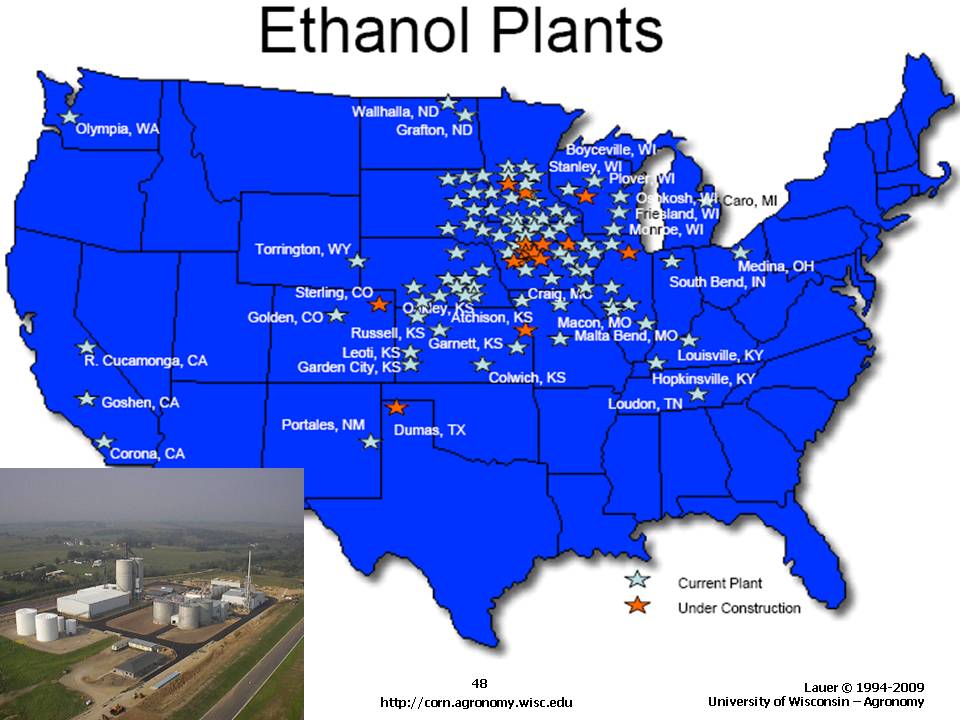
Conservation tillage systems - No-till (soil conservation)

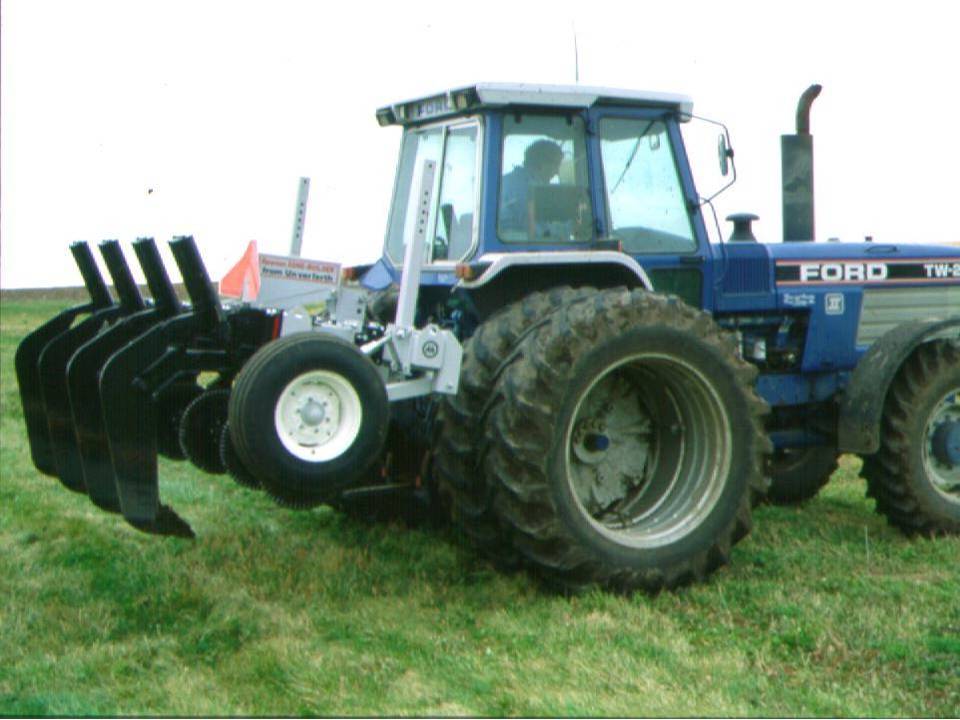
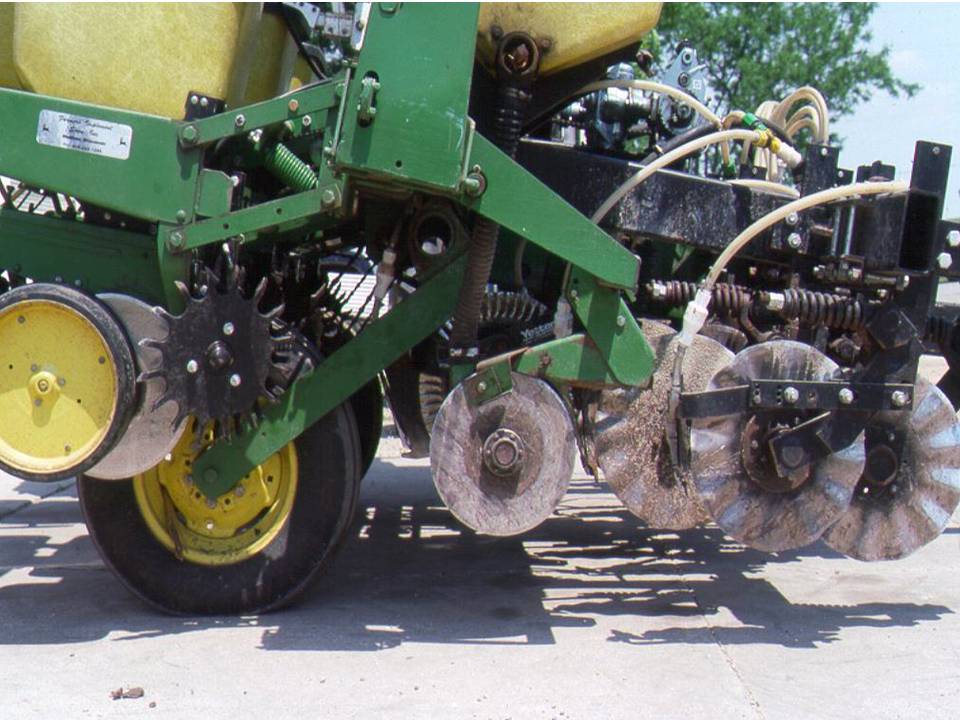
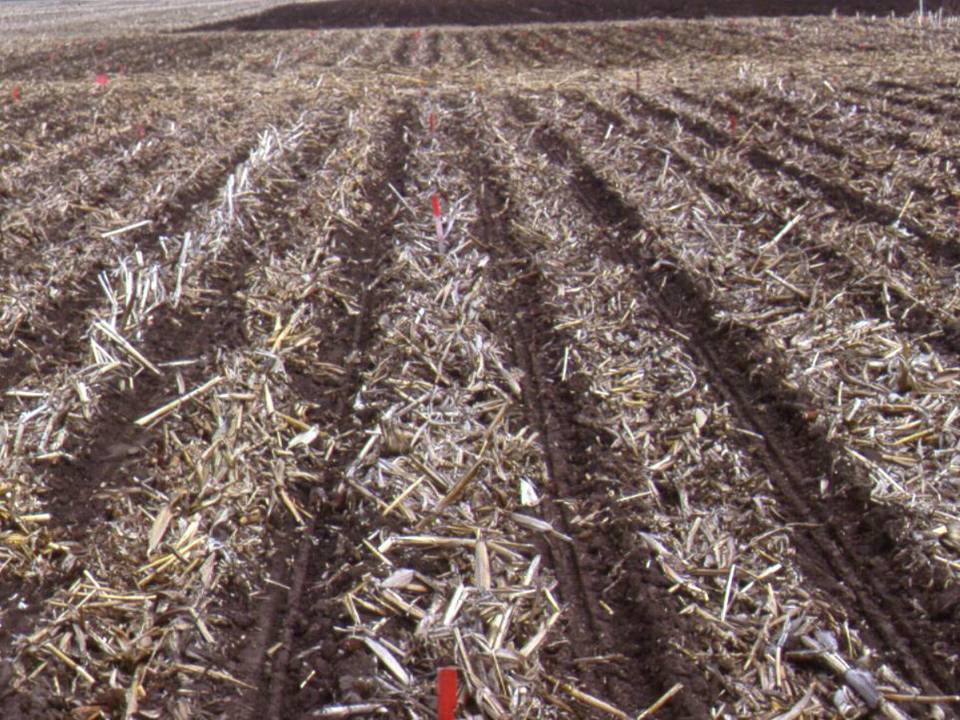
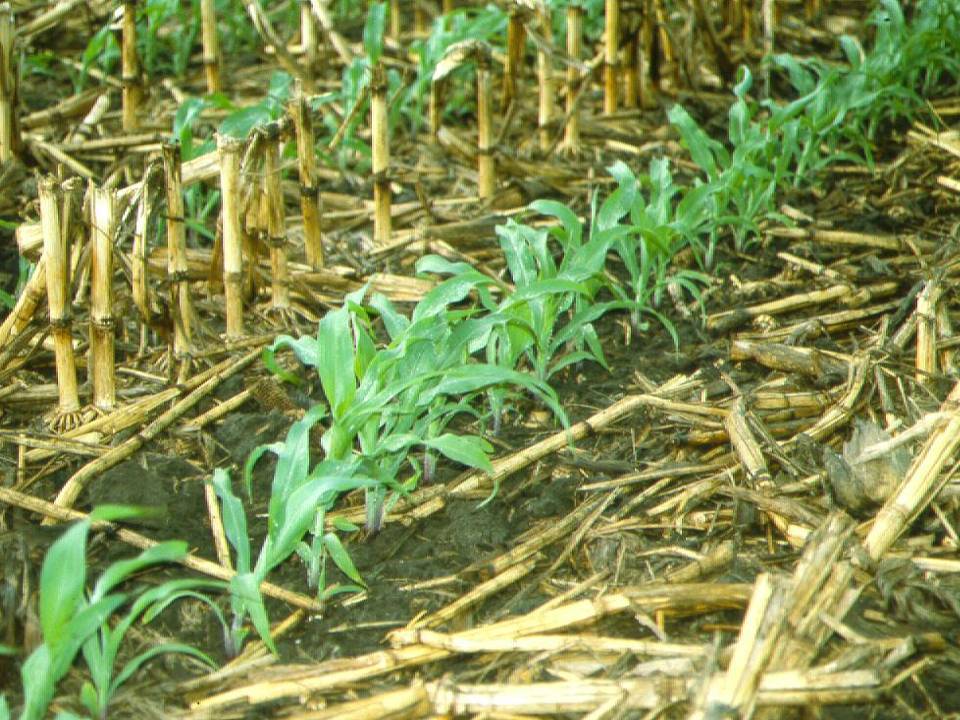
Controlled wheel traffic - Precision farming "Success is proving elusive"

Increased inputs, i.e. fungicides, non-conventional soil amendments, micro nutrients
Previous trends influencing Wisconsin agriculture (Issues and Tensions)
Weather: Climate change

Brazilian soybean production
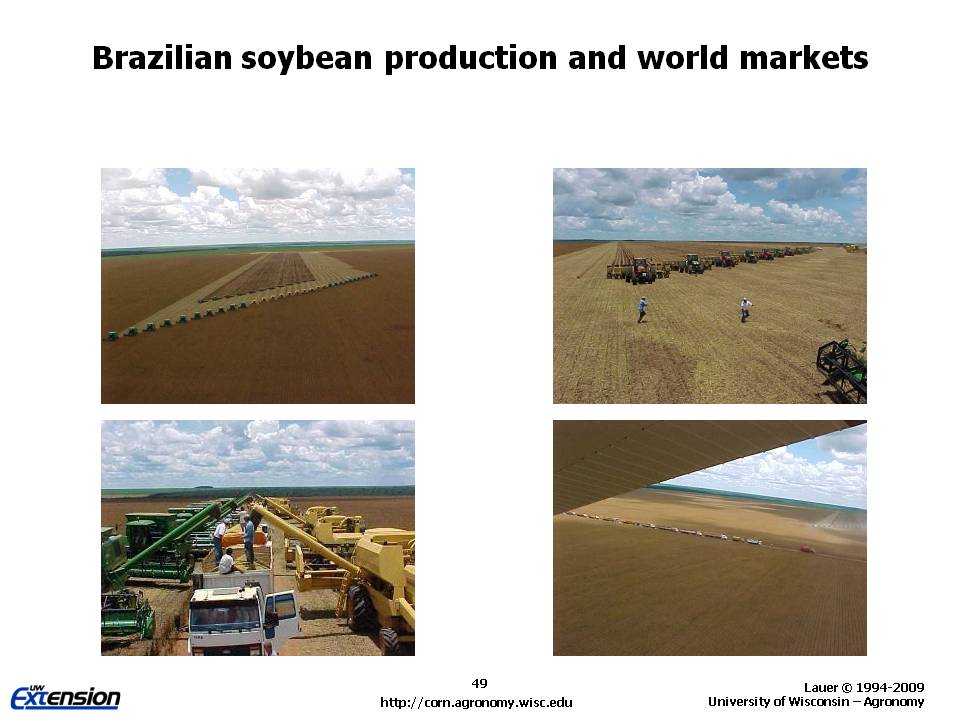
Information and knowledge
- Land Grant system
- Internet - Distance Diagnostics
- Decision simulation software - ABCS, SELECT
- UWEX, Farm and Industry Short Course, Ag Professionals, Diagnostic Training Center
- Certified Crop Advisors
Sustainability of current Midwest Cropping Systems



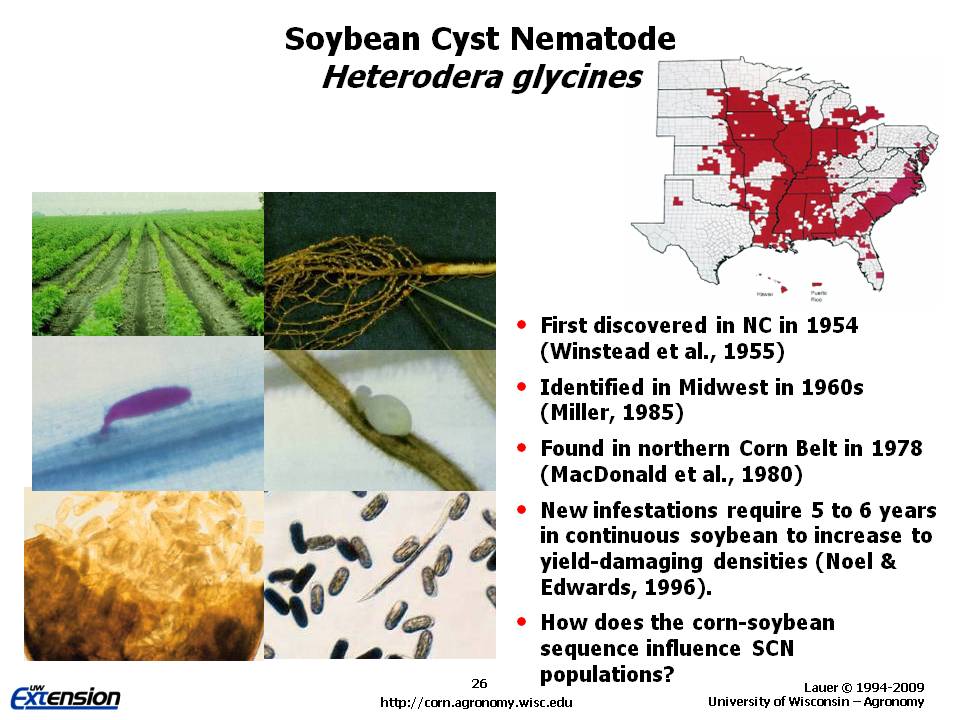

Government programs - " Freedom to Farm", USDA Farm Bills
- Nutrient management plans
- Rural/Urban interface
Corn seed treatments and Soybean inoculants
Ag journalists name top 10 agricultural events between 1950 and 2000
derived from a survey of North American Agricultural Journalists (NAAJ)
- Hybridization and other improvements of crops.
- Genetically modified crops that have been engineered to kill insect pests
and tolerate herbicides. Most U.S. farmers adopted this technology in less than
a decade, starting in the 1990s.
- The discovery of DNA (deoxyribonucleic acid), the chemical building block
of heredity, by James Watson and Francis Crick in 1953. These researchers discovered
the ladder-like double helix structure of DNA, helping to start the biotechnology
revolution now underway.
- Norman Borlaug's Green Revolution. Plant breeder Borlaug, who won the
Nobel Peace Prize in 1970 and now teaches at Texas A&M, developed high yielding
dwarf wheat varieties that helped turn Third World countries such as India into
food exporters.
- The agricultural debt crisis of the 1980s, which started when the Federal
Reserve Bank encouraged higher interest rates to slow inflation. This forced many
full-time family farms out of business, created rural bank failures, and crippled
small towns.
- The 1962 publication of Rachel Carson's book, Silent Spring. Carson,
a nature writer and former marine biologist, documented how the insecticide DDT
accumulates in the environment and harms mammals and birds.
- The use of antibiotics for livestock and poultry, approved by the Food and
Drug Administration nearly 50 years ago. Adding antibiotics to the feed of hogs
and chickens not only prevents diseases, it makes the animals grow faster. It also
makes it easier to confine them in large buildings with fewer disease outbreaks.
- Tie. NAAJ members gave equal votes to two developments: the adoption of
no-till farming, which avoids plowing and slows soil erosion, and the fact that
the farm population dropped below 2% of U.S. population for the first time
during the 1990s.
- The adoption of anhydrous ammonia fertilizer, a cheap source of nitrogen
fertilizer made by using natural gas. Until anhydrous ammonia was adopted in the
1950s, farmers relied on animal manure and leguminous plants such as clover to provide
this key plant food. Without cheap nitrogen, the high yields of hybrid corn and
dwarf wheat would not have been possible.
- Integration of the poultry industry. Most farmers once owned a few chickens
to raise for meat and eggs. In the 1960s, as chickens could be confined in large
buildings thanks to antibiotics and abundant cheap corn, the ownership of chickens
gradually concentrated with a few companies. Those companies pay farmers a fee for
each bird they raise for the company. A similar process of vertical integration
is taking place today in the hog industry.
Other key trends include:
- the increasing mechanization of agriculture in general;
- the U.S. grain export boom of the 1970s that followed sales to the former
Soviet Union in 1972; and
- the elimination of rail freight subsidies for grain in Canada, which led
to more exports of Canadian crops and livestock to the United States.
Significant Agronomic Historical Events in Wisconsin
History of the Land Grant System